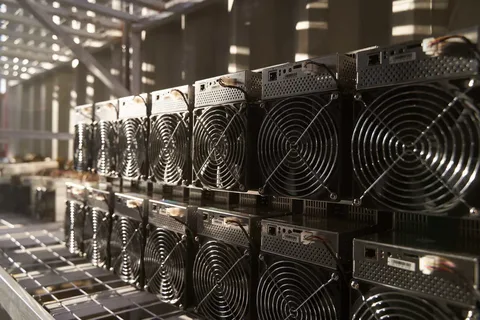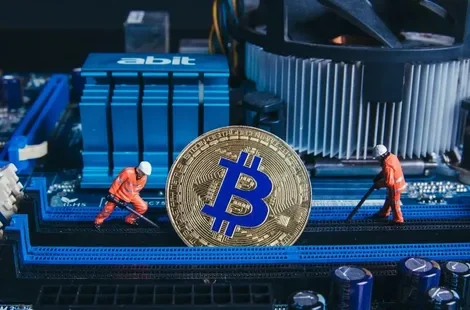The cryptocurrency mining landscape continues to evolve rapidly, making the selection of the best Bitcoin mining hardware 2024 more crucial than ever for both novice and experienced miners. With Bitcoin’s price volatility and increasing mining difficulty, choosing the right ASIC miner can mean the difference between profitable operations and costly disappointments. The best Bitcoin mining hardware 2024 has to offer combines exceptional hash rates, energy efficiency, and reasonable pricing to deliver optimal returns on investment.
Mining Bitcoin has become increasingly competitive since the April 2024 halving event, which reduced block rewards from 6.25 to 3.125 BTC per block. This significant change has forced miners to prioritize efficiency over raw power, making the selection of premium mining equipment more critical than ever. Modern ASIC miners must deliver superior performance while maintaining reasonable electricity consumption to remain profitable in today’s challenging environment.
The Best Bitcoin Mining Hardware in 2024
The cryptocurrency mining industry has undergone dramatic transformations throughout 2024, with manufacturers racing to develop more efficient and powerful ASIC miners. The best mining equipment combines several key factors that directly impact profitability and operational success.
Energy efficiency has become the most critical factor when evaluating mining hardware. With electricity costs representing 60-80% of total mining expenses, miners must prioritize equipment that delivers maximum hash rate per watt consumed. The most advanced ASIC miners now achieve efficiency ratings below 15 J/TH, significantly outperforming older models that consumed 30+ J/TH.
Hash rate capabilities determine how much computational power your mining operation contributes to the Bitcoin network. Higher hash rates increase your chances of successfully mining blocks and earning rewards. Modern top-tier miners deliver between 200-400 TH/s, with some specialized hydro-cooled units exceeding 1,000 TH/s.
Build quality and reliability ensure consistent operation with minimal downtime. Mining hardware operates 24/7 under demanding conditions, making durability essential for long-term profitability. Reputable manufacturers like Bitmain, MicroBT, and Canaan provide robust warranties and established support networks.
Best Bitcoin Mining Hardware 2024: Top ASIC Miners Reviewed

Premium Tier: High-Performance Mining Rigs
Bitmain Antminer S21 Pro
The Antminer S21 Pro is one of the most powerful air-cooled Bitcoin mining ASIC on the market today, delivering exceptional performance for serious mining operations. This flagship model provides 234 TH/s hash rate while consuming approximately 3,510 watts, achieving an impressive efficiency rating of 15 J/TH.
The S21 Pro represents the cutting edge of air-cooled mining technology, incorporating advanced semiconductor design and optimized cooling solutions. Its robust construction ensures reliable operation even in demanding industrial environments. However, the premium pricing may place it beyond reach for casual miners or those with limited budgets.
Key Specifications:
- Hash Rate: 234 TH/s
- Power Consumption: 3,510W
- Efficiency: 15 J/TH
- Price Range: $3,500-$4,500
- Release Date: March 2024
Bitmain Antminer S19 XP Hydro
The S19 XP Hydro utilizes liquid cooling technology to achieve superior performance and energy efficiency. The Bitmain AntMiner S19 XP Hydro is considered one of the best options on the market for Bitcoin mining, offering excellent hash rates with reduced noise levels compared to air-cooled alternatives.
Hydro-cooled miners provide several advantages including higher hash rates, improved energy efficiency, and quieter operation. These benefits make them ideal for data centers and professional mining facilities where noise reduction and maximum performance are priorities.
Mid-Range: Balanced Performance Options
MicroBT Whatsminer M53S
The Whatsminer M53S provides excellent value proposition for miners seeking reliable performance without premium pricing. This model delivers solid hash rates while maintaining reasonable power consumption, making it suitable for medium-scale mining operations.
MicroBT has established itself as a reliable alternative to Bitmain, offering competitive performance specifications with often more affordable pricing. Their miners consistently demonstrate good build quality and dependable operation across various environmental conditions.
Canaan Avalon Made A1566
Canaan’s latest offering targets miners looking for proven reliability and consistent performance. The A1566 incorporates lessons learned from previous generations while introducing efficiency improvements that enhance profitability.
The Avalon series has maintained a reputation for stability and longevity, making it popular among miners who prioritize consistent operation over absolute maximum performance. This approach often results in better long-term ROI despite lower peak hash rates.
Entry-Level: Budget-Friendly Mining Solutions
Antminer S19j Pro+
For newcomers to Bitcoin mining, the S19j Pro+ offers an accessible entry point without compromising on quality. While not the newest model available, it provides reliable performance at more affordable pricing, making it suitable for small-scale operations.
This miner offers a good balance between initial investment and ongoing profitability, especially in regions with low electricity costs. Its proven track record and widespread availability make it a popular choice among beginning miners.
Bitcoin Mining Profitability Analysis 2024
Understanding mining profitability requires careful analysis of multiple variables including hardware costs, electricity expenses, and Bitcoin price fluctuations. In 2024, Bitcoin miners are collectively generating approximately $26 million per day from both block rewards and transaction fees, demonstrating the continued viability of mining operations.
The April 2024 halving event fundamentally changed the mining economics landscape. Most recently, in April 2024, the fourth Bitcoin halving reduced the block reward to 3.125 BTC, forcing miners to optimize operations more aggressively to maintain profitability.
Electricity Cost Considerations
Electricity costs represent the largest operational expense for Bitcoin miners, often determining the difference between profit and loss. Successful miners typically access electricity rates below $0.06 per kWh, with some industrial operations securing rates as low as $0.03-$0.04 per kWh.
With the current Bitcoin price at $57,909.16, U.S. miners face about a 50% loss when using standard residential electricity rates, highlighting the importance of securing competitive energy contracts for profitable mining operations.
Return on Investment Calculations
With the price of Bitcoin around $100,000 and slowly rising network difficulty, mining profitability will remain stable. In this case, ROI could amount to 10-20% annually, representing attractive returns compared to traditional investments when properly executed.
Calculating accurate ROI requires considering equipment depreciation, maintenance costs, facility expenses, and potential downtime. Professional miners often achieve payback periods of 12-18 months under favorable conditions, while residential miners may require 24-36 months depending on their electricity rates.
Factors to Consider When Choosing Bitcoin Mining Equipment
Power Efficiency and Consumption
Energy efficiency remains the most critical factor determining long-term mining success. Modern ASIC miners achieve dramatically better efficiency ratings than previous generations, with leading models consuming 50% less electricity per terahash than miners from just two years ago.
When evaluating power efficiency, consider both absolute power consumption and hash rate performance. A miner consuming 3,000W but delivering 200 TH/s provides better efficiency than one consuming 2,000W while delivering only 100 TH/s.
Cooling and Noise Requirements
Mining hardware generates significant heat and noise, requiring adequate cooling infrastructure and noise management strategies. Air-cooled miners typically require ambient temperatures below 35°C (95°F) for optimal performance, while hydro-cooled systems can operate in higher temperature environments.
Noise levels vary dramatically between models and cooling methods. Standard air-cooled miners produce 70-80 decibels, equivalent to heavy traffic noise, while liquid-cooled systems operate much more quietly at 40-50 decibels.
Warranty and Support Services
Comprehensive warranty coverage protects your investment against hardware failures and manufacturing defects. Leading manufacturers typically provide 12-24 month warranties with varying levels of support responsiveness.
Consider the manufacturer’s reputation for honoring warranties and providing timely technical support. Downtime directly impacts profitability, making reliable support services essential for commercial mining operations.
Initial Investment and Financing Options
Hardware acquisition costs represent substantial upfront investments, with premium miners costing $3,000-$15,000+ depending on specifications. Many miners utilize financing options or lease agreements to spread costs over extended periods.
Factor in additional expenses including shipping, customs duties, electrical infrastructure, cooling systems, and facility modifications when calculating total investment requirements.
Setting Up Your Bitcoin Mining Operation
Infrastructure Requirements
Successful Bitcoin mining requires proper electrical infrastructure capable of handling high-power loads continuously. Most miners require 220V or 240V electrical connections with adequate amperage capacity for sustained operation.
Cooling infrastructure becomes critical for maintaining optimal operating temperatures and extending hardware lifespan. Proper ventilation, air conditioning, or liquid cooling systems prevent thermal throttling and reduce component stress.
Mining Pool Selection
Individual miners rarely possess sufficient hash rate to successfully mine blocks independently, making pool participation essential for consistent earnings. Popular mining pools include F2Pool, Antpool, ViaBTC, and Slush Pool, each offering different fee structures and payout methods.
Pool selection impacts both earnings consistency and fee expenses. Compare pool fees, payout thresholds, geographic server locations, and historical performance when choosing mining pools.
Network and Monitoring Setup
Reliable internet connectivity ensures consistent communication with mining pools and prevents earnings loss due to network interruptions. Redundant internet connections provide backup connectivity for critical mining operations.
Monitoring software helps track miner performance, temperature readings, hash rates, and earnings in real-time. Popular options include AwesomeMiner, Hive OS, and manufacturer-specific applications that provide comprehensive operational oversight.
Maintenance and Optimization Strategies

Regular Cleaning and Maintenance
ASIC miners require regular maintenance to maintain optimal performance and extend operational lifespan. Dust accumulation reduces cooling efficiency and increases operating temperatures, potentially causing performance degradation or hardware failures.
Establish monthly cleaning schedules using compressed air to remove dust from heat sinks, fans, and air intakes. Replace worn cooling fans before failure to prevent thermal damage to critical components.
Firmware Updates and Performance Tuning
Manufacturer firmware updates often include performance optimizations, bug fixes, and new features that enhance mining efficiency. Regular firmware updates ensure your equipment operates at peak capabilities with latest improvements.
Advanced users can implement custom firmware solutions that unlock additional performance or efficiency gains. However, custom firmware may void warranties and requires technical expertise to implement safely.
Temperature and Environmental Monitoring
Maintaining optimal operating temperatures extends hardware lifespan and ensures consistent performance. Install temperature monitoring systems that alert operators to excessive heat conditions before damage occurs.
Environmental factors including humidity, altitude, and air quality impact mining equipment performance. Maintain proper ventilation and consider air filtration in dusty environments to prevent premature component wear.
Future Trends in Bitcoin Mining Hardware
Technology Advancement Predictions
The Bitcoin mining industry continues advancing rapidly with each new generation of ASIC miners delivering improved efficiency and performance. Future developments will likely focus on advanced semiconductor processes, innovative cooling solutions, and artificial intelligence optimization.
Emerging technologies including liquid immersion cooling, advanced chip architectures, and renewable energy integration will shape the next generation of mining hardware. These innovations aim to reduce operational costs while improving environmental sustainability.
Regulatory and Environmental Considerations
Increasing regulatory scrutiny on cryptocurrency mining operations emphasizes the importance of energy-efficient equipment and sustainable practices. Miners utilizing renewable energy sources and efficient hardware will likely face fewer regulatory challenges.
Environmental concerns surrounding Bitcoin mining drive innovation toward more efficient technologies and cleaner energy sources. Future mining operations will need to demonstrate environmental responsibility to maintain social acceptance and regulatory approval.
Conclusion
Selecting the best Bitcoin mining hardware 2024 has to offer requires careful consideration of efficiency ratings, hash rate performance, initial costs, and operational expenses. The rapidly evolving mining landscape demands equipment that can adapt to changing market conditions while delivering consistent profitability.
The Antminer S21 Pro stands out as the top choice for most serious miners, combining exceptional performance with proven reliability. However, your specific circumstances including electricity costs, budget constraints, and operational requirements will determine the optimal choice for your mining operation.

















